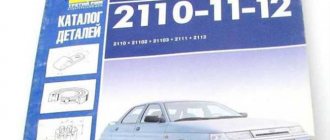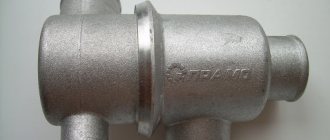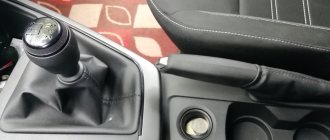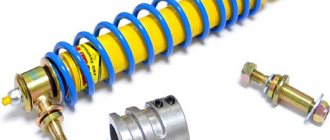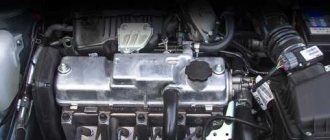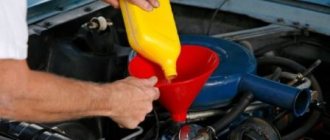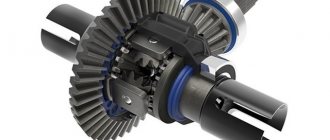Where do cars come from for scrap?
Any car, even the newest one purchased at a dealership, can end up in scrap metal; the reason for this can be a major accident, arson, vandalism, etc. In this case, if nothing is removed from the worker’s car, it’s just a pile of scrap metal. The cost of such a car for scrap metal will be equal to the cost of an old Zhiguli car, which is also sent to the press.
A new car is a rarity at a scrap metal site; as a rule, some of these cars are tried to be restored, and some are sold for spare parts. Mostly old Moskvich, Volga, Kopeyka, Zaporozhets and other heritage of the Soviet Union are scrapped. Mostly young people try to sell cars for scrap, they sell cars left over from their grandfathers, such cars simply take up precious space in the garage and the car seems to be “on the move” and can be used, but the price of such a car on the market is no more than 10 thousand rubles, and even sell problematic and time-consuming, so it’s easier to sell the car for scrap rather than “bother” with it.
https://www.youtube.com/watch?v=ytpolicyandsafetyru
Another option for a scrap car is abandoned cars in courtyards and city streets, each of us has seen such cars, especially a lot of them appear after winter, which is why such cars are nicknamed “snowdrops”. The reason for the ownerlessness of the car may be the death of the owner, he was sent to prison, he moved, or he simply no longer needs it.
Most often, of course, they hand over old Soviet cars that have already outlived their usefulness. Below we have prepared a list of the most traded-in car brands. You can go to the corresponding page and see all the information - how much the car weighs, what kind of blockage it is, how much money you can get by scrapping this brand.
VAZ 2106 (six)
VAZ 2101 (kopeck)
VAZ 2105, 2107
VAZ 21099
Moskvich 412
Zaporozhets
It is worth saying that cars such as NIVA and UAZ are not scrapped so often due to the strong chassis and strong body of these cars - many people try to restore such cars and drive them further, especially in rural areas, where such cars are simply necessary.
Also, former owners of Svyatogor, Tavriy, are trying to turn over the car for ferrous metal, and Daewoo Nexia is also often found, due to its inexpensive price on the market.
The average weight of a car is 1 ton; if the car comes as a whole (glass, interior elements, tires, etc.), the blockage is set to at least 30%. Those. in fact, the weight of the car is reduced by 300 kg and only 600 kg = 0.6 tons is used for scrap metal. Now the most interesting thing is that the cost of scrap metal in each region is different.
The highest price for scrap metal is observed in St. Petersburg (currently it is about 9,000 rubles per ton), in Moscow the price is 7-8 thousand rubles per ton, in Novosibirsk 4-5 thousand, etc. Therefore, here and now we will not be able to name the exact amount. Find out in your city what they accept for scrap metal of category 5 A (namely, this is the category the car will belong to) and multiply by the weight of your car minus 30% of the blockage.
Now it’s worth considering the costs of transportation to the place where you want to sell the car for scrap. If the car is running, then there are no problems, you will get there under your own power and get money without extra expenses. If the car’s wheels at least spin and the suspension and body “live together” and the steering works, you can easily ask a friend to pull you on a cable to the scrap metal acceptance. If the steering does not work, you can tow it with a rigid hitch.
But what if the car is junk and never gets there? This is where costs need to be considered. Tow truck or self-loader 5 tons. The average price for such equipment is 800-1000 rubles per hour, working time is considered to be 2 hours (the so-called minimum wage), i.e. it will cost 2000 rubles to transport the machine for scrap metal. If the price of scrap metal in your city is 6 thousand rubles, then for the car you will receive approximately 1,600 rubles (1 ton - 30% contamination x 6,000 rubles - 2,000 rubles transportation).
If you think that you can call and order “car removal for scrap metal” from a company that accepts scrap metal, then you should be disappointed. As a rule, large companies are engaged in the removal of 3 or 5 tons of metal; they will provide you with a service if you offer to immediately remove at least 3 cars for scrap from one place.
If you just need to get rid of your car without getting a penny for it, then there are plenty of people willing to do it. You can also turn to intermediaries, and there are a lot of them in this business, because... Earning money from scrap metal tempts many. Intermediaries need to earn something, but they also cannot offend you, so for your car, in this option, you will receive no more than 500 rubles.
Here we have written real numbers, specify them using the example of your car and you will get exact numbers, and it’s up to you to decide whether to scrap the car or not, perhaps there is an option to accumulate scrap metal by filling the trunk and interior with all sorts of pieces of iron, so in 2-3 in a year you will collect 3-4 tons of metal and hand it over without transport costs for a decent amount of money.
If you still decide that it’s time to scrap your old car, then you should contact the large ferrous metal acceptance centers in your city. The larger the metal warehouse, the higher their price - this is as a rule. But it also happens that a recently opened reception area may offer prices a little higher in order to get more customers and promote its name.
First of all, look for “Vtorchermet” in your city - this is a large network of bases throughout Russia, interconnected only by name, this used to be the single and only enterprise of the USSR for the procurement of scrap, but now the name “Vtorchermet” has become a brand.
Do a little monitoring of prices - they will not differ much, the maximum difference can be 300-500 rubles per ton. Therefore, it is easier and faster to contact the base that is closest to you. Also, before making change, ask if there is cash at the till, because... It often happens that acceptances are calculated only the next day - there is no money in the cash register.
Engine number m412 - search by DRIVE2
Engines for Moskvich | 412 ME (Modified)
Engine
“
Moskvich 412
and modifications” UZAM, UFA, UMZ, whoever calls this
engine
, but the first thousand...
Introduce youreself. Email or number
phone number, if it is specified in the profile. Password.
412ME (Modified). Similar to 412E but has 331 heads.
swap 1.7 uzam in 412 — IZh Moskvich 412, 1.7 l., 1979
Friends, I replaced my original 1.5 with a 1.7 taken from an Izh 2126 ode) since it’s on this engine
My father drove for 80,000 km, I’ll say not modestly,
the engine
is ideal! I won’t describe much, if you’re interested, write and ask.
Engine number - IZh Moskvich 412, 1.5 l., 1976
The review from the owner of IZH Moskvich
412
is different. As usual, on the eve of work on the street I fell ill. I called the guys who are ready to pick up the body. It will be transported on a small self-loader, so they asked about documents. I, in turn, found a certificate of disposal, registration certificate, etc.
Engine number - IZh Moskvich 412, 1.5 l., 1973
Review from the owner of IZH Moskvich
412
- observation.
At one point I decided to look for engine
number )) as a result of a Google search I found
IZH Moskvich
412
1973,
engine
1.5 l., 80 l. p., rear wheel drive, manual transmission — observation.
An unexpected discovery. — Moskvich 412, 1.5 l., 1974.
Review from the owner of Moskvich
412
is different.
It turned out that I never looked at the engine
number of this car.
After all, now engine
number is not indicated either in the registration certificate or in the registration certificate. But I was interested in the fact that the tourniquets.
VAZ engine in Moskvich (part 1) - IZh Moskvich 412.
I've been meaning to write my report on engine
VAZ in
Moskvich
.
I want to say that the engine
almost a year ago, I drove about 4000 km on it, so all the decisions I made have been checked and tested. So everything is in order.
IZH Moskvich 412 1993, petrol engine 1.5 l., 85.
The review from the owner of IZH Moskvich
412
is different.
Today I decided to look for something, where it was, I couldn’t find it, and there’s nothing useful on the Internet! I have an IZH Moskvich 412
IE (export model) 1993! Help me find someone who doesn’t find it difficult! Thanks everyone in advance!
Selling a completely new engine 412 (38 rev!) - IZh Moskvich.
Review from the owner of IZH Moskvich
412
- spare parts.
The engine
itself plus the gearbox are also new.
The engine
is from 1989, judging by the stuff on the block.
IZH Moskvich
412
1972,
engine
2.4 l., 130 l. p., rear wheel drive, manual transmission — spare parts.
IZh Moskvich 412 1984, petrol engine 1.5 l., 60.
Review from the owner of IZH Moskvich
412
- tuning. In 1966, TsNIITA engineers implemented in metal a mechanical fuel injection system that was competitive at that time; bench tests proved its viability.
Looking for the engine number... — Moskvich 2140, 1.5 l., 1979.
I wanted to compare
engine
number
the engine
itself .
But trouble awaited me - almost the ENTIRE engine
was covered in dirt and oil, if it was washed at least once in its life, it was good.
Engine number: freebie, announced in 2011, quietly.
Review from Moskvich
426 - taxes and duties.
Moskvich
426 “Primus” (third life) › Logbook ›
Engine
number : freebie, announced in 2011, quietly ended in 2013.
IZH Moskvich 412 1977, petrol engine 1.5 l., 100.
Review from the owner of IZH Moskvich
412
- observation. I went to the Rostov region for a ride, admired the nature, drove 200 km from the city and the background outside the window didn’t even change, there were steppes all around and small villages, I drove about 600 km on a 12k, when I arrived home I started collecting.
good people, please tell me! — IZH 2715, 1.5 l., 1988.
the engine arrived
to me !
it says (where is engine
number )
412
m - what kind of modification is this?
I don’t understand anything? I searched the entire Internet and couldn’t find anything! I had 412
E!
but
nothing has been written 412 please help me find out more about him? (volume.
Modernization of the UZAM-412 engine - AZLK Club community.
Another article about engines
UZAM, this time about their modernization, I don’t know, maybe someone will be interested in this, as usual we write comments and ask questions.
When designing the engine,
it was possible to make the displacement larger by increasing it.
Developments of AZLK: UZAM 412 - True story!
Today I wanted to write about the rally 412
Muscovite
, but I came across information about
the engine
of that same
412 Muscovite
- UZAM
412
.
I decided not to miss this opportunity. Firstly, let’s prepare for an article about the Muscovite
, and secondly.
engine - IZH Moskvich 412, 1.5 l., 1974
Review from the owner of IZH Moskvich
412
- test drive.
engine Engine M
-
412
.
The engine
was developed entirely by the design team of the MZMA plant, although the prototype of quite a few design solutions is not difficult to guess - the latest, at that time.
Engine UZAM 412 and variations. Myths and reality.
The article is an appendix to the previous entry about 412
m
Muscovite
.
Since this engine
is a kind of exception among domestic automobile
engines
in terms of design and is shrouded in many myths, I think it is quite worthy of a separate article.
IZH Moskvich 412 1.7l
The owner of IZH Moskvich
412
talks about his car on DRIVE2 with photos.
Engine
installed 1.7l Body repainted in melon color with the addition of xerallic (changes color depending on the lighting) Original 4-speed transmission Interior: panel from.
engine marking Moskvich 2140 - Moskvich 2140.
The most reliable way to determine which engine
installed on the car, you can see it by the markings stamped on the cylinder block: after the model designation, the base
engine
is immediately marked with the letter E, indicating its export version.
History of the Moskvich 412 engine (for general development to whom.)
Review from Moskvich
403 - just like that.
In the late 60s - early 70s, a powerful, modern, not demanding on operating materials and very reliable engine
was the main trump card
of the 412
both in the domestic and export markets.
UZAM-412 is a Moskvich 412 gasoline engine, which has established itself as a reliable and durable power unit, characterized by efficiency and ease of maintenance.
This engine has been on the assembly line from 1966 to the present. During this time, the power unit underwent significant modernization and was constantly refined by engineers, which allowed the engine to meet the requirements of the time.
Advantages of scrapping a car
If there are flammable substances left in the car, such as gasoline, then it is poured into a specific canister. A completely disassembled car is now a pile of metal and is sent under a metal crusher, which crushes the car into small pieces.
The remains of the car are melted down and serve as excellent recyclable materials and are used to make bodies for new cars.
By handing over a car you:
- earn;
- clean the environment of garbage;
- participate in improving the environment;
- help get recyclable materials
Description of the motor device
The UMZ 412 engine is equipped with four cylinders. The internal combustion engine power system is carburetor. And the cylinders are located at an angle of twenty degrees. If previously the Moskvich power unit was designed for fuel with a low octane rating of AI 76, now the modernized versions will only run on AI 92 and higher.
The BC is made entirely of aluminum. The liners are cooled by a water jacket, which surrounds the cylinder block on all sides. The seals for the sleeves at the bottom are made of copper, and at the top there is an iron-asbestos gasket.
The cylinder head is also entirely made of aluminum alloy. Therefore, the motor does not like overheating. With frequent and strong increases in temperature, the aluminum cylinder head simply becomes deformed. This leads to a complete replacement of the internal combustion engine.
The cylinder head also has a water cooling jacket. Therefore, in order to overheat the Moskvich 412 engine, incredible efforts on the part of the car owner or simple negligence will be required. It is necessary to add fluid every two thousand kilometers if you see that the engine begins to overheat too often. Before filling, check the coolant level and oil level. It happens that due to a low level of lubricant, the engine heats up and the coolant does not help.
The crankshaft is forged from durable steel. There are counterweights installed on it. There are five counterweights in total. There are also five main journals and 4 connecting rod journals. All of them are sealed with liners made of thin-walled three-layer metal tape.
The front end of the crankshaft is equipped with a sprocket that connects it to the gas distribution mechanism. A flywheel is attached to the rear side of the crankshaft. The flywheel ring gear allows the engine to be started using a starter.
The camshaft of the gas distribution mechanism is mounted on the cylinder head. A special sprocket sets its rotation. It is double-row with a closed bush-roller chain.
The timing belt has dampers and tensioners. The latter is installed at the front end of the cylinder head. And the cylinder valves stand in an inclined plane at an angle of fifty-two degrees.
Attention! The exhaust valves are on the right, and the intake valves are on the left on the Moskvich 412 internal combustion engine.
The motor is cooled forcibly by operating a pump that pumps coolant through special tubes and a jacket. The radiator is equipped with automatic valves that protect it from overheating and explosion if the temperature rises to the boiling point.
Important! The exhaust valve operates at a pressure of 0.5 kgf per square meter, and the inlet valve - 0.01. Therefore, the cooling system can operate at temperatures up to 107 degrees. This happens due to increased steam pressure in the system.
Engine attachments from Moskvich are easy to replace or repair due to the unique tilt, which allows you to get close to the mechanisms without removing the engine. The lubricant pan is fully equipped with stiffeners both outside and inside.
The internal combustion engine is not picky about oil and its replacement. The engine lubricant needs to be changed once every twenty thousand kilometers. Without major repairs, the internal combustion engine will last up to 250,000 kilometers instead of the 200,000 indicated by the manufacturer.
Although the latest engine upgrades did not turn out to be as reliable as the first engine from Moskvich 412 was. Such engines suffered the following breakdowns, which often cause negative reviews from car enthusiasts towards 412 engines:
- fuel consumption has increased. The cause is problems with the carburetor. Sometimes an incorrectly set ignition is also the cause of increased fuel consumption;
- vibrations when revs increase. This was not observed on earlier models. However, on the latest models the exhaust manifold often burns out and the engine mount cracks. This leads to vibrations and howling of the engine;
- lubricant leak. The cylinder head gasket burns out or wears out. On the latest models, the Moskvich 412 internal combustion engine is the weak point. It must be replaced regularly after fifty thousand kilometers;
- The engine does not start the first time. Bad starter, low battery.
Otherwise, car owners should follow the instructions in the internal combustion engine operating book to avoid problems resulting from their own negligence.
Appearance
Until 1969, the car came with the round headlights and grille of its predecessor, but had a new rear design that featured horizontal taillights and a triangular headlight on top of them.
Subsequently, modernization, Moskvich-412 acquired new, rectangular headlights, produced in the GDR. All cars produced in the Moscow region had chrome door handles with a round button to open them.
The car received an updated body that met the safety conditions of those times and looked more modern. Subsequently, fangs appeared on the bumpers, serving as part of the passive safety. Over time, the car underwent other changes and improvements.
Installation of ignition on engines mod. 331 and 3317
- Repair manuals
- Repair manual for AZLK 2141 (Moskvich) 1986-2000.
- Installation of ignition on engines mod. 331 and 3317
Distributor (with removed runner and cover) of engine mod. 331 and 3317
| 1 – breaker lever; 2 – textolite cushion of the breaker lever; 3 – screw for fastening the contact stand; 4 – breaker cam; 5 – low voltage wire output; 6 – nut securing the distributor shank; 7 – distributor body; 8 – contact stand; 9 – groove for adjusting the gap between contacts; 10 – movable breaker plate; 11 – vacuum corrector |
Installation duplicate marks on the flywheel and clutch housing of the engine mod. 331 and 3317
| 1 – clutch housing; 2 – TDC mounting lug on the clutch housing; 3 – 10° mark before TDC on the flywheel; 4 – 0° mark before TDC on the flywheel; |
Installation of ignition on engines mod. 331 and 3317 are produced when the new car has a mileage of 1.5 thousand km. and subsequently every 15 thousand km.
For engines mod. 331 and 3317 ignition distributors 47.3706 are installed.
Checking the condition of the working surface of the breaker contacts, cleaning them, and lubricating the distributor are carried out similarly to the ignition distributor of an engine mod. 2106 every 15 thousand km of vehicle mileage. Additionally, it is necessary to lubricate the cam bushing by first removing the rotor and the felt washer under it.
Adjusting the gap between the breaker contacts
| EXECUTION ORDER | ||||
| Setting the ignition timing with the following options: A) The distributor was not removed from the engine
|
Mass Moskvich 412
The curb weight of the Moskvich 412 412IE 1.5 MT sedan with an empty fuel tank is 1012 (kg).
Model weight:
According to the passport data, the curb weight of modifications of the Moskvich 412 sedan is:
- Moskvich 412 412 1.5 MT (1967 - 1969): 1045 (kg).
- Moskvich 412 412IE 1.5 MT (1969 - 1997): 1045 (kg).
Scheme for calculating the weight of a car without fuel:
If it is necessary to determine the curb weight of the Moskvich 412 412IE 1.5 MT sedan with an empty fuel tank, then first determine the fuel mass (MT) in the tank (at maximum filling):
- MT = PT x OB, where PT is the density of the fuel (for gasoline - 710 (kg)/m3); OB is the volume of the fuel tank (46 l, indicated in the car’s passport).
- MT = 710 x 0.046 = 33 (kg).
The curb weight of a Moskvich with an empty fuel tank is determined as the mathematical difference between the total curb weight of the vehicle and the fuel weight:
Important: the model range of the rear-wheel drive car of the II group of the small class Moskvich 412 was produced by the Russian (Soviet) automobile manufacturing company AZLK, the model is built on the Moskvich 408 platform, years of production: 1967 - 1999.
ignition order, adjustment and configuration
The owner of a classic model of the Russian automobile industry needs to know how to set the ignition on a Moskvich-412. This is a fairly elementary process, which nevertheless can create difficulties if you do not know the procedure. It is how the ignition is installed on the Moskvich 2140 and other models of the brand that will be discussed in this article.
Why turn on the ignition?
If you set the ignition timing correctly, this will directly affect the dynamics of the car. This will also save fuel. If the ignition is too late, the engine overheats, the working mixture does not burn completely and this also reduces power.
If the engine starts too early, this may cause detonation knocks in the engine. This can even cause valves and pistons to burn out.
Installation instructions
To work, you will need tools such as a set of keys and a test lamp.
The procedure for setting the ignition of the Moskvich-412 is as follows:
- First, remove the valve cover. Next, use the starting handle and crank the crankshaft. Continue until the mark on it matches the point of the pin on the block, and the mark on the sprocket also matches the mark on the cylinder head.
- Release the latches and remove the tumbler cover. Using a “10” wrench, unscrew the two nuts and lift the tumbler. The slider must be placed opposite the wire of the first cylinder.
- Now place the tumbler in place and tighten it. Start the engine. Using a "12" key, you need to loosen the hexagon at the bottom of the distributor. With the engine running, you will need to turn the distributor until you hear the engine running smoothly. This is a method of setting the ignition by ear.
- Adjustment can also be carried out through a control lamp. After you align the marks and direct the slider, you need to loosen the distributor. One wire of the control lamp must be connected to the low voltage terminal, the other to ground. Turn on the ignition. While holding the slider, turn the breaker until the light comes on, this will be the ignition moment.
In the video below you will learn how to set the cam clearance (the author of the video is Garage in the USSR).
Checking for correct installation
The most accurate method of checking the ignition setting is to perform a drive test. To do this, you need to accelerate to 55-60 km/h on a flat road, and then give full throttle. Acceleration is carried out in fourth gear. If knocking occurs after a sudden fuel supply, you need to set the ignition later. Make sure that only 1-2 light knocks are heard.
Ignition switch connection diagram
To install a new ZZ, your action plan should be as follows:
- disconnect the ground wire from the battery;
- set the key to position “0” of the ignition switch;
- Now you need to disconnect the electrical wiring from the terminals of the lock contact device;
- unscrew the four bolts securing the lock bracket on the steering column and remove its cover, and then the entire bracket with the lock;
Photo gallery “Replacing the ignition switch and its device”
Tumblr installation and repair
The tumbler, also known as the ignition drive, may have various malfunctions: cracks in the cover, dirty or wet contact, or broken contact in the power circuit. You can solve them all or just replace the part.
To connect a new part, you will need to check that the roller is installed correctly in the housing. Then, after removing the tumbler cover, insert the shank into the distributor drive housing on the engine. Turn it until the floating clutch pins align.
Next, tighten the nut securing the distributor shank to the drive housing. Install the cover. Then, insert the high-voltage wires from the spark plugs in cylinder firing order 1-3-4-2, taking into account the rotation of the distributor rotor.
The tip of the high-voltage wire from the spark plug of the first cylinder is installed in the terminal socket above the low-voltage terminal in the housing. Next, the wire coming from the ignition coil is inserted into the central socket of the cover. All that remains is to connect the wire coming from the same one on the coil to the low-voltage terminal.
Now connect the vacuum regulator tube. Installation completed.
Video “How to correctly set the ignition on a Moskvich 2140”
This video demonstrates how adjustments are made on one of the most popular Moskvich models (the author of the video is Maxim Mitin)
Loading .
Tuning
Increasing the power of the Moskvich 412 engine presented certain difficulties. Since initially it was possible to squeeze out the maximum possible from 1.5 liters of volume. As a result, when trying to boost the engine, its reliability indicators significantly decreased. Craftsmen bored the cylinders, but this contributed to the rapid burning of the pistons, and the thin walls could not withstand the load, as a result the engine jammed and required expensive repairs.
- The problem was partly solved by installing new modern attachments and reconfiguring the carburetor. Such tuning gave an increase in power of about 20 horsepower. The car accelerated faster, but its fuel consumption also increased to 10 liters per hundred kilometers.
- It is also possible to swap the engine, that is, replace it with a new powerful power unit. In this case, it was possible to use modifications of power units produced in the late nineties. It was only necessary to decide which engine could be installed in the Moskvich.
- In the early nineties, tuning this engine using low-power turbines became very popular. In the engine compartment there was enough space to install a low-power turbine, which, provided that the crankshaft and connecting rods were replaced with stronger ones, made it possible to increase the engine power to 100 horsepower.
The service life of the engine, even with qualified intervention, was reduced, so major repairs were required approximately once every 100 thousand kilometers. That is why tuning of this engine is not widespread.
Among other things, increasing the power of the power unit had a negative impact on fuel consumption. If in the standard version the fuel consumption was about 7-8 liters, then after installing the turbocharger the engine began to consume 13-15 liters per hundred kilometers, which also did not please many car owners.
Source
Peculiarities
There is a common misconception among owners of 412 Moskvich that the power unit of their car is an exact copy of the German engine from BMW with the M10 index. However, in reality, when developing this engine, developments taken from a pre-war engine from the German Opel Kadett were used.
As a result, in 1966, the first power unit in the Soviet Union was created, which had an overhead camshaft and three metal crankshaft liners. The power of this power unit in its original version was 73.5 horsepower.
Aluminum Moskvich 412 engines were made entirely of aluminum, which was rare at that time. The use of aluminum led to a slight increase in production costs, but the power unit itself turned out to be reliable and lightweight. The 1.5-liter engine was originally developed for low-octane gasoline, so the Moskvich 412 could run on 76 gasoline.
- Initially, the engine displacement was 1.5 liters, but in the late eighties and early nineties the power unit was radically modernized, which made it possible to offer customers three modifications with displacements from 1.6 to 1.8 liters. The car owner will be able to determine which engine can be installed in a Moskvich by the car’s VIN number.
- It should be said that the transmission from restyled versions of the engine is not suitable for the original modification of this engine. The new modifications turned out to be not so reliable, and at the same time they worked unstably on low-octane gasoline, requiring the car owner to fill the tank with 92 gasoline.
- A special feature of this overhead valve engine with wet lenses was the tilt of the cylinder block to the right, which was deviated from the vertical by 10 degrees. This engineering technique made it possible to reduce inertia and reduce engine vibration at idle speed. The crankshaft was manufactured using forged technology, and the timing chain made it possible to significantly increase the reliability of the design.
- The car owner was spared the need for frequent servicing of the timing mechanism. We also note the peculiar location of the engine compartment, which was tilted to the right by 20 degrees, which simplified the maintenance of attachments. The engine itself, at the same time, took up less space in the engine compartment of the Moskvich. A similar arrangement was used on many American cars of the time.
- The engine oil sump is made with external and internal fins, which in turn improves oil cooling. The power unit of the Moskvich 412 turned out to be unpretentious in maintenance and required an oil change only once every 20 thousand kilometers. Let us note the excellent reliability indicators of the engine, which could run about 200 thousand kilometers without major overhauls. Such indicators for an engine produced in the seventies of the last century were considered excellent, so the engine received flattering reviews from car owners.
- Excellent power performance, and 73.5 horsepower was achieved from 1.5 liters of volume, were achieved through the use of an original hemispherical chamber in which the fuel burned completely, which increased the engine efficiency. Subsequently, a similar hemispherical combustion chamber was used on other modifications of engines for Moskvich. Similar design solutions were used by American and German motorists on Chrysler and BMW cars.
Engine Modifications
The car, in addition to the usual one, also had an export version. In this case, a more powerful (55 l/s) engine was installed on it. In addition, forced power units were installed on cars intended for circuit racing and rallies. There is an opinion that the 408s were also equipped with one and a half liter power units. This is not so, it’s just that a new engine was installed on the old body for some time, but the car already had the Moskvich-412 index.
Technical side of the issue
Under the hood of the car was a new UZAM 75-horsepower engine with a volume of 1.5 liters. The engine itself, crankcase and valve cover were made from lightweight aluminum. The peculiarity was that the engine block was tilted to the right. It is due to this “zest” that the designers achieved miniature dimensions of the power unit, thereby significantly reducing the weight of the machine itself.
The engine was synchronized with a 4-speed manual transmission. The front suspension was independent, and the rear was dependent - thanks to the springs installed on it, the car could carry light loads. Drum brakes were installed on all wheels, which were additionally equipped with a vacuum booster.
This Moskvich model was the real pride of the plant, but despite all the advantages, it also had disadvantages. For example, the fact that the crankcase was made of aluminum made it practically helpless before breaking through, so car enthusiasts had a need to install additional protection.
A special feature of the engine installed in Moskvich was the unusual shape of the combustion chamber, which was spherical. The excellent location was also noted - they “stood” opposite each other, and not next to each other as in the VAZ. This feature in the placement of valves significantly improved the purging in the combustion chamber. A similar arrangement system can be seen now, on HEMI engines that are installed on Chrysler.
Malfunctions
| FAULTS | CAUSES |
| Increased fuel consumption. | The reason for this was an incorrectly set ignition and problems with the carburetor. The car owner needed to check for a spark and open the carburetor, which made it possible to determine the cause of the breakdown. |
| The appearance of pronounced vibrations over a wide speed range. | The exhaust manifold burned out and the engine mount failed. In the first case, the vibration was accompanied by a noticeable roar of the engine, and if there were problems with the airbag, the engine distorted in the engine compartment. |
| The appearance of oil leaks. | The cylinder head gasket on these vehicles is a weak point. According to the manufacturer's recommendation, it was changed every 50 thousand kilometers, but even then the gaskets often became dull and leaked oil. |
| The engine refuses to start. | Quite often there were problems with the starter, which failed after winter. It is also not uncommon to have problems with the battery, which received insufficient charge from the generator. |
History and design of the UZAM-412 engine
The UZAM-412 engine was put on the assembly line in 1967. It was completely created by specialists from the Moscow plant using modern technologies at that time and was structurally very similar to the BMW M115 unit, produced since 1961. However, unlike the German engine, the Soviet one had many important differences.
The main feature of the UZAM-412 was the tilt of the cylinder block to the right by 10 degrees. Thanks to this, the unit turned out to be quite small in size and made it possible to lower the center of gravity of the machine.
The UZAM-412 engine had an overhead camshaft, the timing drive was carried out by a plate chain, and the valves were placed in a V-shape on the sides of the camshaft. In addition, the power unit received a hemispherical combustion chamber, which ensures better combustion of the working mixture, and an aluminum block with cast iron liners, allowing for easy major repairs. Note that these developments were actively used by many global automakers at that time.
The working volume of UZAM-412 was 1480 cm3. At the same time, it developed a power of 72 hp. and torque 106 Nm. However, its feature was its high speed. The reason for this was the design of the camshaft and the valve opening height. As a result, the UZAM-412 produced maximum power at as much as 5500 rpm, and torque at 3200 rpm. Of course, these characteristics are good for sports cars, but for a family car elasticity is more important. That's why owners complain about this inconvenience.
Sports success
But, despite all the shortcomings, the 412th Moskvich managed to loudly announce itself to the whole world thanks to its sporting successes. In 1968, four Moskvich-412s took to the start of the 16,000 km London-Sydney Marathon. In the end, everyone reached the finish line safely. And the AZLK team took 4th place in the team competition.
Moskvich 412 speeds through London at the 1968 London-Sydney Marathon.
Moskvich 412 speeds through London at the 1968 London-Sydney Marathon.
In 1970, the legendary London-Mexico City supermarathon took place with a length of 26,000 km. Of the five crews that started, three finished. The AZLK team won bronze in the team competition. And the best of the Muscovites with tail number 28, driven by Leonty Potapchik, Yuri Lesovsky and Eduard Bazhenov, finished 12th! It was a small but big victory.
The crew of Leonty Potapchik, who took 12th place at the London-Mexico City marathon.
The crew of Leonty Potapchik, who took 12th place at the London-Mexico City marathon.
In 1971, our Muscovites took 5th and 6th places in the 24 Hours of Spa daily marathon.
In 1971, our Muscovites took 5th and 6th places in the 24 Hours of Spa daily marathon.
The 412th Muscovites performed even more successfully in the Tour of Europe. In 1971, the crew of the Moskvich-412 took third place (second place went to the Soviet new VAZ-2101), simultaneously winning the “golden cup” for first place in the team competition. In the same year, our Muscovites took part in the 24 Hours of Spa race. Two of the three cars finished at the Ardennes circuit, finishing fifth and sixth in their class. And already in 1974, the legendary Soviet racer Stasis Brundza won the Tour of Europe on the same Moskvich-412.
The 412's greatest triumph in world motorsport was Stasys Brundza's victory in the 1974 Tour of Europe.
The 412's greatest triumph in world motorsport was Stasys Brundza's victory in the 1974 Tour of Europe.
Unfortunately, the 412th became the last truly successful model of the plant. After this, Moskvich began to roll back into the shadow of VAZ, from which he was never able to emerge. At the beginning of the 21st century, the plant became history.
- Read about the sporting successes of Moskvich-412 here.
Moskvich-412: this is how Soviet engineers remade the BMW engine
Crown of shboreniya
The fifth model of the racing car, initially focused on the national (namely national!) Formula 1, was designed by Mark Milstein under the leadership of Gladilin. “Moskvich-G5” was replete with innovations, the most important of which was the changed overall layout: a new five-speed gearbox with synchronizers in the four highest gears was located behind the main gear, combined with it and the clutch in a common aluminum housing in full accordance with the prevailing world practice "canonical" concept.
The load-bearing element of the structure was a space frame made of chromansil pipes with a diameter of 27 and 25 mm, on which aluminum body panels were installed. The chassis received a new independent eight-link rear suspension and disc brakes with separate drive on the front and rear wheels.
The engine was initially used exactly the same as that of the G4M, Moskvich-412, boosted to 92 hp. With. Moskvich-G5 made its debut under the control of Viktor Shchavelev in the Amber Volga race in Riga in September 1968. He finished only sixth, behind not only two factory-built cars, but also three Leningrad “homemade” ones. But most importantly, the car covered the entire distance the first time; the new transmission and suspension have proven their viability.
In 1969, the second copy of the new car was built. Both cars started the season with old engines, but after the first races they received new ones with a standard cylinder block and a new head with two camshafts. These motors became known as “Moskvich-412-2V”, since the index “413” given to them by the designers was not officially approved.
The engines were equipped with two twin Weber-40DCO carburetors and a free exhaust system; power was 100 hp. at 5800 rpm. Subsequently, these engines were constantly improved. In 1970, by increasing the compression ratio, increasing the size of the intake valves and expanding the valve timing, power increased to 112 hp. With. In the same year, the exhaust system was also changed.
In 1972, the displacement was increased to 1840 cm3 against the standard 1478 cm3, and the power reached 124 hp. With. Changes also affected the chassis: the track was widened, larger tires were installed, and the oil cooler, previously located at the front, next to the water radiator, was moved back and placed above the engine. In 1974, both cars received completely new fiberglass body panels, significantly different in shape from the previous aluminum ones.
This version is designated as “Moskvich-G5M” (sometimes this index is also applied to the 1972 modification). The engines used were mainly of the 1972 model, although once or twice the G5M went to the start line with an “intermediate” 1.7-liter version of the engine (according to the recollections of Viktor Shchavelev, already a coach of the factory team at that time).
Two Moskvich-G5 cars collected a whole collection of medals in national championships: three gold (Vadim Rzhechitsky, 1969; Yuri Terenetsky, 1972; Nikolay Kazakov, 1973), one silver (Yuri Terenetsky, 1974) and two bronze (Yuri Terenetsky, 1973 and 1976). But by the mid-70s, it became more and more difficult to win: competitors in the new Estonias were, as they say, “breathing down their necks,” and the Muscovites practically did not change.
In 1976, not only the factory circulation, but also the magazine “Behind the Wheel” openly wrote: “The racing “Moskvich-G5M” is old. This has been discussed more than once. And the decision needs to be made not about modernizing it, but about creating a new, fundamentally new machine. And then it will be possible to continue the fight on the highways.”
Perhaps the Moskvich-G6 would have appeared on the drawing boards of the racing car group, but by that time Gladilin was no longer alive, Shugurov had left the factory, and the introduction in 1977 of a new classification of racing cars, in which there was no place for the national formula 1, put an end to the participation in racing of cars with twin-shaft engines. Both Moskvich racing cars “remained out of work” after the end of the 1976 season. Gradually, AZLK reduced its presence in circuit racing of standard (“body”) cars.
The last Moskvich racing cars gathered dust in corners for several years, and in 1983 they were transferred to the AZLK factory museum. Before this, the restoration was carried out, unfortunately, rather carelessly: random tires, missing small parts, not fully tightened bolts, strange nose emblems that did not exist before. And yet this is better than decommissioning and dismantling, the fate that befell all previous racing and sports models of Moskvich.
Technical characteristics Moskvich-412 '1967–97
| Value Parameter value in (kg) | |
| 412 1.5MT | |
| Curb weight | 1045 (kg) |
| Years of manufacture | 1967 — 1969 |
| 412IE 1.5 MT | |
| Curb weight | 1045 (kg) |
| Years of manufacture | 1969 — 1997 |
| Moskvich-412 '1969–82 | Moskvich-412 in the Tour of Europe rally '1971 | Moskvich-412 '1971–76 | Moskvich-412 “Rajd Polski” '1975 | Moskvich-412IE-028 '1982–97 | |
| 1969–1982 | 1971 | 1971–1976 | 1975 | 1982–1997 | |
| basic | |||||
| steering wheel location | left | ||||
| Number of doors | 4 | ||||
| number of seats | |||||
| Total | 5 | 5 | 5 | ||
| of them are inferior | |||||
| design | monocoque body | ||||
| geometry | |||||
| dimensions | |||||
| length | 4 120 mm | 4 205 mm | |||
| width | 1 550 mm | 1 550 mm | |||
| height | 1,480 mm | 1,480 mm | |||
| wheelbase | 2 400 mm | 2 400 mm | |||
| track | |||||
| front | 1,247 mm | 1,270 mm | |||
| back | 1,237 mm | 1,270 mm | |||
| ground clearance | |||||
| standard | 173 mm | ||||
| weight | |||||
| equipped | 1,045 kg | ||||
| full | 1,445 kg | ||||
| engine | |||||
| Name | UZAM 412 | UZAM 412DE | |||
| location | front, longitudinal | rear, longitudinal | front, longitudinal | ||
| supply system | carburetor | 2 carburetors | carburetor | 2 carburetors | carburetor |
| block material | Aluminium alloy | cast iron | Aluminium alloy | cast iron | Aluminium alloy |
| cylinders/valves | l4/2 | ||||
| volume | 1,478 cm³ | 1,478 cm³ | |||
| power | |||||
| power | 75 hp | 75 hp | |||
| ranging from | 5,800 rpm | 5,800 rpm | |||
| torque | |||||
| torque | 108 Nm | 108 Nm | |||
| ranging from | 3,000 rpm | 3,000 rpm | |||
| in the range up to | 3,800 rpm | 3,800 rpm | |||
| compression ratio | 8,8 | 8,8 | |||
| fuel | AI-93 | petrol | AI-93 | petrol | AI-93 |
| turbocharging | No | ||||
| cooling | liquid | ||||
| transmission | |||||
| drive unit | rear | ||||
| Transmission | Manual transmission 4 | Manual transmission | Manual transmission 4 | Manual transmission | |
| clutch | single disc dry | single disc, dry | |||
| suspension and steering | |||||
| front suspension type (installed) | Independent | ||||
| rear suspension type (installed) | Dependent | ||||
| electrician | |||||
| on-board voltage | 12 V | ||||
| dynamic characteristics | |||||
| maximum speed | 140 km/h | ||||
| acceleration to 100 km/h | 19 sec | ||||
| speed limiter | No | No | |||
| performance characteristics | |||||
| fuel tank volume | 46 l | 46 l | |||
| Start-stop system | No | No | No | ||
| reversal | |||||
| diameter | 11.4 m | 11.4 m | |||
| brake system | |||||
| ABS | No | ||||
| front brakes | |||||
| description | drums | drums | |||
| type | drums | disk | |||
| rear brakes | |||||
| description | drums | drums | |||
| type | drums | ||||
| wheels and rims | |||||
| disc material | steel | ||||
| front | 4.5J × 13. /?? R13 | ?J × 13 . /?? R13 | 4.5J × 13. /?? R13 | ?J × 13 . /?? R13 | |
| rear | 4.5J × 13. /?? R13 | ?J × 13 . /?? R13 | 4.5J × 13. /?? R13 | ?J × 13 . /?? R13 |
Information collected by project participants. If you find an error or would like to fill in any gaps, you can do so by completing the registration process on the site.
AutoWP.ru '2005–present
Please note that all materials posted on the autowp.ru server were added by site visitors.
The site administration does not have information about the legality of publishing these materials.
All images are posted for educational purposes.
English 中文 (beta) Português brasileiro Français (beta) Belarusian Ukrainian (beta) Want to help?
Technological process of repairing the ZMZ-412 engine
Moskvich-412 is a Soviet small-class passenger car, produced in Moscow at the MZMA plant, later renamed AZLK, from 1967 to 1976 and at the Izhevsk automobile plant from 1967 to 1997. It was created on the basis of the Moskvich-408 model.
Compared to its predecessor, engine power has increased by 50% and torque by 17 Nm, maximum speed has increased by 18 km/h, acceleration time to 100 km/h has decreased by 10 seconds, and fuel consumption has averaged 10 liters per 100 km. Braking dynamics have also improved, and driving has become easier. After the body restyling carried out in 1969, passive safety significantly improved, which now complied with UNECE standards, which was confirmed by crash tests in France.
The car was widely offered on the foreign market; in the first years of production, most of the M-412 was exported. The car was assembled in Belarus (as Moskvitch Rila) and Belgium (as Scaldia 412).
In the fall of 1964, the MZMA plant began production of the Moskvich-408 model, which became the founder of a whole family of third-generation Moskvich vehicles. Not stopping there, in 1967 the plant also mastered the 412 model, which became a significant milestone not only in the history of the plant, but also in the history of the domestic automotive industry as a whole.
It should be noted that it is incorrect to assume that the M-412 was the successor to the −408 model, since these cars were produced in parallel, although the start of production of the M-412 was somewhat delayed. In fact, the M-412 should be considered a more prestigious and powerful version of the M-408. The direct successor to the “408” was the Moskvich-2138 model (1976).
In 1967, in parallel with the deployment of production of the M-412 in Moscow, similar cars began to be produced instead of the M-408 at the Izhevsk Automobile Plant, built on the production base of the defense enterprise, supervised by the Ministry of Defense and personally by the Minister of Defense Ustinov.
The “Moskvich” brand in the model designation was retained - and all Izhevsk-made cars were designated precisely as “Moskvich-412” (later, after the appearance of the updated body, “Moskvich-412IE”), although they bore the factory sign of the Izhevsk plant on the grille radiator The first model released under the independent Izh brand was IZH-2125 Combi. Thus, the names “Izh-Moskvich-412” or “Izhevsk “Moskvich-412”” are acceptable, but not “Izh-412”.
Subsequently, the Izhevsk “Moskvich” developed and modernized as a whole independently of the Moscow ones.
Due to a higher level of quality control at a de facto defense enterprise, according to a number of evidence, cars produced in Izhevsk in Soviet times were assembled significantly better than their counterparts produced by AZLK - in particular, the plant in Izhevsk practically did not allow manufacturing defects. However, initially the non-automotive profile of the production made itself felt - for example, the interior trim of the Izhevsk Moskvich cars was generally made more roughly than those of the Moscow ones.
The M-412 was produced serially in Izhevsk until 1997 (individual copies - until 2001), including in pickup body versions - Izh-2715 (since 1972) and "combi" - Izh-2125 (since 1973); The Moskvich-434 van was also produced in Izhevsk for a short time.
Until 1968-69, the car outwardly fully corresponded to the 412 Moskvich produced by AZLK in the “old”, “408” body with vertical rear lights, with the exception of the Izh emblem on the radiator grille (different from the later Izh emblems ") and steering wheel. Towards the end of this period, still on the “old” body, a radiator grille with a changed pattern (vertical) appeared.
Since 1969, the Izhevsk sedan received a new body (412IE) with horizontal rear lights (AZLK sedans began to be assembled in the same body). But if the Moscow “Moskvich”, along with the new body, also received a new radiator grille with wide sidelights and scarce rectangular headlights made in the GDR, then the “Izh-Moskvich-412IE” retained round headlights and the old grille. Rectangular headlights and a grille similar in design, but different from that used on cars produced by AZLK (with a vertical pattern), were equipped only with certain batches of Izhevsk cars intended for export in the period from 1972 to 1974.
Technical characteristics of Moskvich-412
| Production year | 1967-1997 (non-series - until 2001) |
| Body type | All-metal, monocoque sedan |
| Number of seats | 4 passengers + driver |
| Size (l/w/h) | 4195/1550/1480 mm |
| Weight (curb) | 1040 kg |
| Ground clearance (front/rear) | 176/176 mm |
| Wheelbase | 2400 mm |
| Track (front/rear) | 1247/1237 mm |
| Engine | Verkhnevalny, 4-cylinder, in-line |
| Cylinder diameter | 82 mm |
| Cylinder operating order | 1-3-4-2 |
| Piston stroke | 70 mm |
| Working volume | 1.478 l |
| Compression ratio | 8.8 |
| Engine power | 75 hp |
| Maximum speed | 140 km/h |
| Fuel consumption | 8-10 l/100 km |
| Crankshaft speed | 5800 rpm |
| Carburetor model | K126-N |
| Generator | G-250-Zh, power 350W |
| Starter model | ST113-B |
| Clutch | 1-disc with hydraulic drive and spring |
| Brake system | Shoe, with automatic adjustment, hydraulic vacuum booster and rear wheel braking force regulator |
| Hand brake | On rear wheels with mechanical drive |
| Transmission | Mechanical, 4-speed, fully synchronized |
| Suspension (front/rear) | Independent with 2-way shock absorbers, wishbones and coil springs/Spring with 2-way shock absorbers |
| Cardan shaft | Open, tubular with two ball bearing joints |
| Fuel tank | 46 l |
| Steering gear | Globoidal worm with two spokes and double roller, diameter 40 cm |
| Steering gear | Mechanical with pendulum arm and transverse rod |
| Wheel size | 13 inches |
Modifications[edit | edit code]
- UZAM 412 - 1.5 l. (deformed)
- UZAM 331.10 - 1.5 l., engine with a modified layout for the AZLK-2141 Moskvich car
- UZAM 3317 - 1.7 l. (AI-93)
- UZAM 3313 - 1.8 l. (A-76)
- UZAM 331460 - 1.7 l., analogue 3317 for Izh-2126
- UZAM 331430 - 1.8 l. (A-76), analogue 3313 for Izh-2126
- UZAM 3318 - 1.8 l. (AI-93), differed from UZAM 3317 in a crankshaft with a crank radius increased by 5 mm (40 mm), piston stroke increased to 80 mm, cylinder diameter - 85 mm, power - up to 90 hp. at 5300 rpm, torque - up to 145 Nm at 3200 rpm, compression ratio - 8.5. Installed on AZLK-2141.
- UZAM 3320 - 2.0 l.
- UZAM 248 AVL - 2.0 l. (injector)
Advantages and disadvantages
Pros of the car
- Quite pleasant and stylish appearance for its age;
- Good seating position in the front seats;
- Quite acceptable visibility;
- For moderate driving, satisfactory dynamism and speed;
- Good maneuverability;
- Spacious luggage compartment;
- Durable and hardy qualities;
- Inexpensive spare parts and ease of replacement.
Cons of the car
- Age;
- Drum brakes on all columns;
- Requires too much free time to be devoted to the car;
- Difficulty starting the power unit in winter;
- The track is narrow, the car can easily roll over;
- Fuel consumption;
- It's hard to find quality parts;
- Noisy and always leaking gearbox;
- Safety;
- Noisy;
- Stiff suspension.
AZLK 2141 | Engines | Moskvich
3.0 Engines
Cylinder operating order 1–3–2–4 Non-flatness of the lower surface of the cylinder head 0.05 mm Camshaft 1.8 l engine Cam heights: – intake 39.751 – 39.850 mm – exhaust.
3.2 Operations to repair an engine installed in a vehicle
Many engine repairs can be carried out directly on the car. Before starting repair work, it is recommended to thoroughly clean the engine and engine compartment. Depending on the type of work, you can remove the hood to facilitate access to the engine. Without removing the engine from the car, you can eliminate various types of leaks, for example, replace the gaskets.
3.3 Top dead center of the first cylinder
3.4 Cylinder head cover
3.5 Intake manifold
3.8 Replacing camshaft sealing rings
PERFORMANCE ORDER 1. Remove the toothed belt, the toothed belt tensioner and the camshaft pulley. 2. Remove the rear timing belt cover. 3. Using a small screwdriver, remove the distributor O-ring.
3.9 Camshafts and tappets
3.10 Cylinder heads
3.11 Oil pan
3.12 Oil pump
3.13 Flywheel/drive plate
Removal PERFORMANCE ORDER 1. Raise the car and remove the gearbox. 2. Using a marker or paint, mark the position of the clutch drive assembly in relation to the flywheel. 3. Gradually, in a diagonal sequence, loosen b.
3.14 Replacing the rear crankshaft seal ring
PERFORMANCE ORDER 1. Remove the gearbox and flywheel. 2. The easiest way to remove the old O-ring is to use a screwdriver to hook the O-ring and remove it from its seat. 3. Also sealing.
